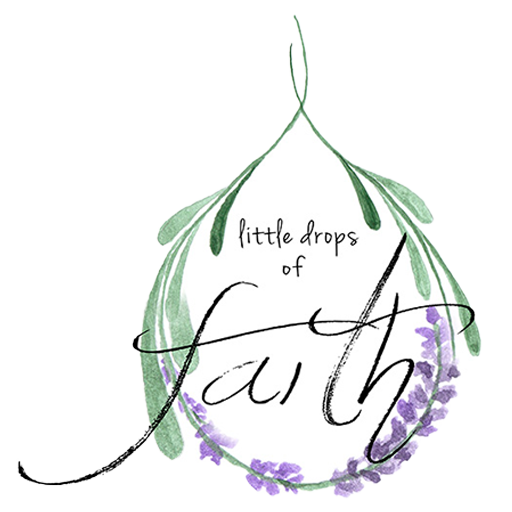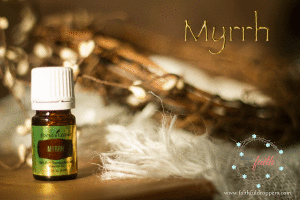Essential oils played an important role in the life of Jesus the week leading up to his crucifixion, at the crucifixion, and at his burial. I have meticulously read and researched the Gospels of Matthew, Mark, Luke, and John, as well as Healing Oils of the Bible by David Stewart Ph.D., and The Essence of Jesus by Matthew Tart, to be able to bring to you the following information. Although I have not listed every detail that the Bible records for us during this time, I have chronicled the events that surround the use of essential oils. I hope that you are blessed by this journey of essential oils, leading to the cross and beyond.
There are 4 accounts of Jesus being anointed by women in the four Gospels; Matthew, Mark, Luke, and John, with the same account being told in Matthew and Mark.
In the Gospel of Luke, we are told of an anointing early in Jesus’ ministry, by a woman of the city, who was a sinner, (we can assume she was a harlot) while Jesus was at Simon the Pharisee’s home. When she learned Jesus was there, she came, washed his feet with her tears, dried them with her hair, anointed his feet with her kisses and an ointment from an alabaster flask. Jesus used this moment to tell Simon a parable and to remind him that he had not bothered to offer him water to wash his feet or oil to anoint his head. This woman showed great love and appreciation for Jesus. He told the woman her sins were forgiven and to go in peace. [Luke 7:36-50].
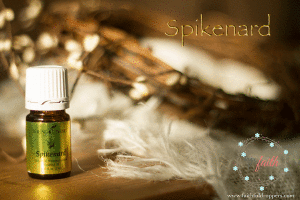 In the Gospel of John, we are told that sometime after Jesus had raised Lazarus from the dead, and six days before the Passover, Jesus was in Bethany again at Lazarus’ house, reclining at table. Mary anointed Jesus’ feet with a pound of expensive ointment made from pure nard (Spikenard in an alabaster flask) and wiped his feet with her hair. The house was filled with the fragrance of the ointment. Judas became indignant because the ointment could have been sold and the money could have gone to the poor. The value of the Spikenard was a common laborers wage for an entire year. We are told that Judas didn’t really care about the poor, but instead helped himself to the money because he was in charge of it. Jesus rebuked Judas and told him that the ointment was for the day of his burial. Also, the poor would always be with them, but he would not. [John 12: 1-8]
In the Gospel of John, we are told that sometime after Jesus had raised Lazarus from the dead, and six days before the Passover, Jesus was in Bethany again at Lazarus’ house, reclining at table. Mary anointed Jesus’ feet with a pound of expensive ointment made from pure nard (Spikenard in an alabaster flask) and wiped his feet with her hair. The house was filled with the fragrance of the ointment. Judas became indignant because the ointment could have been sold and the money could have gone to the poor. The value of the Spikenard was a common laborers wage for an entire year. We are told that Judas didn’t really care about the poor, but instead helped himself to the money because he was in charge of it. Jesus rebuked Judas and told him that the ointment was for the day of his burial. Also, the poor would always be with them, but he would not. [John 12: 1-8]
In the Gospel’s of Matthew and Mark, we are told the same account of Jesus being in Bethany, at Simon the Leper’s house, two days before the Passover. A woman anointed his head with expensive ointment (Matthew) and very costly pure Nard {Spikenard}(Mark), from an alabaster flask. The disciples reprimanded the woman for not selling the ointment and giving the proceeds to the poor. Jesus rebuked the disciples, telling them they would always have the poor, but would not always have him. Jesus announced that the anointment was for preparation for his body that would be buried. As Samuel anointed David’s head declaring him “the Lord’s Anointed”, Jesus’s anointing declared him King. [Matthew 26:1-13], [Mark 14:1-9]
Jesus ate the Passover meal with his disciples and then took them to the Garden of Gethsemane to pray. According to Matthew Tart, author of The Essence of Jesus, Gethsemane literally means olive press. As he prayed to the Father, “not my will but yours”, he most certainly must have felt the emotional and physical pain of being crushed and pressed, as he sweat drops of blood. Jesus’ blood is the ultimate healing essential oil. At that time his essence was beginning to be extracted for the spiritual healing of the nations. He was then betrayed by Judas, taken into custody by the Chief Priests, Elders and Officers of the People, and Scribes-all carrying weapons, taken before Pilate and Herod to be interrogated, beaten, scourged, mocked with a purple robe, crown of thorns, and a reed in his hand, spat upon, convicted, and sentenced to cruel death by crucifixion on a cross between two thieves. [Matthew 26:17-27:31], [Mark 14:12-15:20], [Luke 22:7-23:25], [John 13-19:12].
After walking up the hill to Golgotha, prior to being nailed to the cross, The Gospels of Matthew and Mark tell us that he was offered a mixture of wine mixed with Gall, which Mark defined as Myrrh. Matthew says, “but when he tasted it he could not drink it at all.” Mark says, “but he did not take it.” In The Healing Oils of the Bible, we are told that this could have been another form of torture. Research has been shown that Myrrh mixed with wine is so bitter it could not be consumed. The level of thirst that Jesus must have experienced after his beating and walking up to Golgotha must have been great. To be offered something to quench thirst, that could not be drunk, must have been torturous. [Matthew 27:34] [Mark 15:22-23]
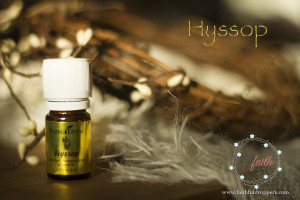 Jesus was crucified, on the 3rd hour of the day. The day became dark between the 6th-9th hour, and Jesus gave up his life willingly on the 9th hour. Just before he died, he said, “I thirst”. A sponge was filled with sour wine, and reached up to his mouth with a reed, which fulfilled prophesy. Matthew and Mark both referred to it as a reed, Luke does not refer to it at all, and John called it a Hyssop branch. Hyssop is known for its respiratory support. Women of mercy may have been allowed to offer this as death was near. There was an earthquake and the temple veil tore in two from the bottom up. [Matthew 27:25-56], [Mark15:24-41], [Luke 15:26-49], [John 19:17-30]
Jesus was crucified, on the 3rd hour of the day. The day became dark between the 6th-9th hour, and Jesus gave up his life willingly on the 9th hour. Just before he died, he said, “I thirst”. A sponge was filled with sour wine, and reached up to his mouth with a reed, which fulfilled prophesy. Matthew and Mark both referred to it as a reed, Luke does not refer to it at all, and John called it a Hyssop branch. Hyssop is known for its respiratory support. Women of mercy may have been allowed to offer this as death was near. There was an earthquake and the temple veil tore in two from the bottom up. [Matthew 27:25-56], [Mark15:24-41], [Luke 15:26-49], [John 19:17-30]
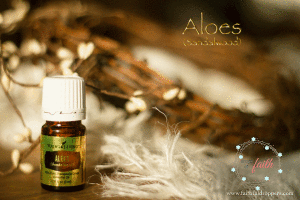 That day Jesus died was the Day of Preparation for the Sabbath. In the evening Joseph of Arimathea, a wealthy Jew, who secretly followed Jesus, asked Pilate for Jesus’ body. Pilate agreed. All four of the Gospels agree that Joseph went and took Jesus’ body off of the cross, wrapped him in a linen shroud and placed him in a new tomb. The Gospel of John says that Nicodemus, a wealthy Jew, also came with 75 pounds or myrrh and aloes (Sandalwood), $150,000-$200,00 worth of oils in today’s money, prepared the body, wrapped it in linen cloths, and laid it in a new garden tomb, since it was the day of Preparation, and the tomb was close at hand. [Matthew 27:57-61], [Mark 15:42-47], [Luke 23:50-57], [John 19:38-42]
That day Jesus died was the Day of Preparation for the Sabbath. In the evening Joseph of Arimathea, a wealthy Jew, who secretly followed Jesus, asked Pilate for Jesus’ body. Pilate agreed. All four of the Gospels agree that Joseph went and took Jesus’ body off of the cross, wrapped him in a linen shroud and placed him in a new tomb. The Gospel of John says that Nicodemus, a wealthy Jew, also came with 75 pounds or myrrh and aloes (Sandalwood), $150,000-$200,00 worth of oils in today’s money, prepared the body, wrapped it in linen cloths, and laid it in a new garden tomb, since it was the day of Preparation, and the tomb was close at hand. [Matthew 27:57-61], [Mark 15:42-47], [Luke 23:50-57], [John 19:38-42]
The following day was the Sabbath and we are told in Luke that the day was observed. On the day after the Sabbath, when the women returned with spices to prepare the body, Praise God, Jesus was no longer in the tomb. He was pronounced Risen! Jesus revealed himself to his disciples and over 500 people, and then 40 days later ascended to the right hand of God the Father where he is today, waiting to call his believers home. [Matthew28],[Mark 16], [Luke 24], [John 20]
Healing Has a Fragrance – The Essence of Jesus- Matthew Tart
It smells like Spikenard, as it reminds us of our King and Messiah. We shout Hosanna, as a declaration of our need, and our praise, as we acknowledge that Jesus is the anointed one.
It smells like Myrrh, as it reminds us that Jesus is the First and Last, and he alone is our healer
It smells like Hyssop because it reminds us that we are cleansed and forgiven. The blood of the Lamb has been applied to our hearts, and healing has taken place.
We can breathe freely now; God’s work of restoration has been completed!
Carrie Parker from Cartersville, GA
#2360488
